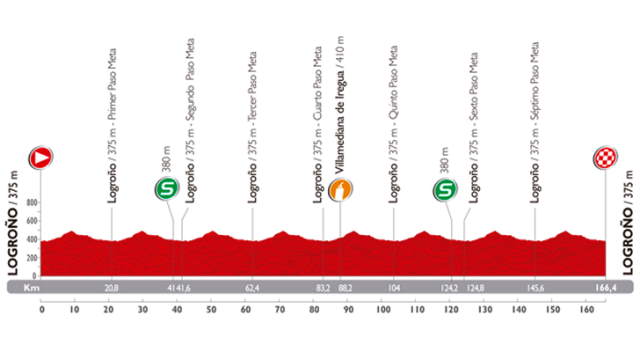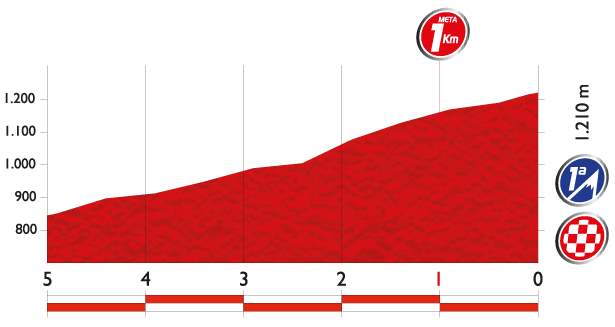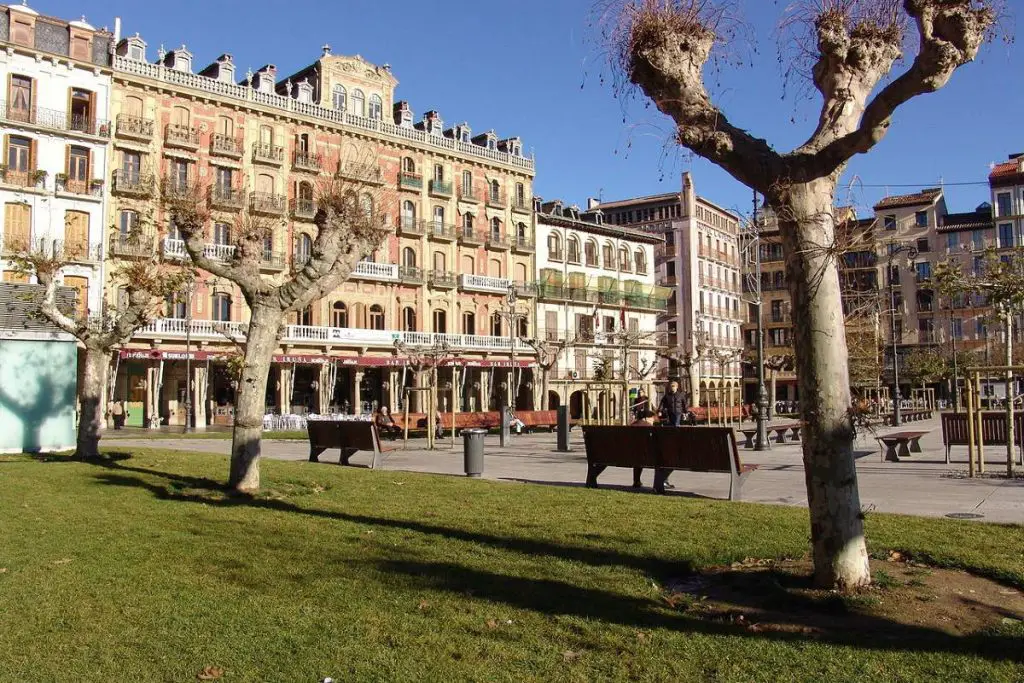Vuelta a España 2014 Stage 11 Details – it is a 153.4 km mountain stage with summit finish from Pamplona to Santuario De San Miguel De Aralar.
The Vuelta returns to the Autonomous Community of Navarra with an unprecedented stage. It will be a complicated day as it follows a time-trial stage. The first part will be flat but the second part will be completely different. Before facing the final kilometers, the peloton will have to endure a 2nd category climb, then ride up to the finish line positioned on the summit of San Miguel de Aralar. This will be tough and demanding as the 8 final kilometers feature slopes with inclinations of up to 14%.

Previous stage: Vuelta a España 2014 Stage 10 Details

Next stage: Vuelta a España 2014 Stage 12 Details
Vuelta a España 2014 Stage 11 quick info
- DATE September 03, 2014, Wednesday
- STAGE TYPE Mountains (summit finish)
- START-FINISH Pamplona (450 m) – Santuario De San Miguel De Aralar (1,210 m)
- LENGTH OF THE COURSE 153.4 km
Vuelta a España 2014 Stage 11 profile



Vuelta a España 2014 Stage 11 start city: Pamplona

Vuelta a España 2014 Stage 11 start city, Pamplona or Iruña, alternative spelling: Iruñea is the historical capital city of Navarre, in Spain, and of the former Kingdom of Navarre.
The city is famous worldwide for the San Fermín festival, from July 6 to 14, in which the running of the bulls is one of the main attractions. This festival was brought to literary renown with the 1926 publication of Ernest Hemingway’s novel The Sun Also Rises.
Hemingway also mentions and describes the Tour of the Basque Country (Spanish: Vuelta Ciclista al País Vasco, Basque: Euskal Herriko Itzulia) in this very novel, an annual cycling stage race held in the Spanish Basque Country in April. The race was first held in 1924.

Related: Hemingway’s grimpeurs
Several notable churches, most of its 16th- to 18th-century fortified system and other civil architecture buildings belong to the historic-artistic heritage of Pamplona.
On the southern slope of the Serranía de Cuenca, 42 km from the capital, are the crossroads between Sierra and Mancha, between Centro and Levante, open to impressive landscapes and settlements, Carboneras de Guadazaón offers itself to the visitor upon Picacho hill, with streets that are easy to navigate and genuine townspeople that are open and hospitable.
It is a region rich in findings pertaining to ancient civilizations, from the Neolithic period onwards. Its wild surroundings and barely trodden paths that bear the perfume of pine trees, savin, holm oaks, rosemary and aromatic plants, make it the ideal place for hiking, cyclo-tourism, orientation, mountain climbing and outdoor sports, this being the land of young pelota players.
The Church of Santo Domingo de Silos (14th – 15th century) contains magnificent craftwork and preserves the Santa Hijuela inside, which gives rise to the Palm Sunday celebration on the second Sunday in May, with the assistance of the surrounding towns. It is worth mentioning the “fiestas de animas” during carnival time, and the patron saint festivities in honour of San Roque on the 16th of August.
In the town’s outskirts, near the road, is the ancient Convent of Santa Cruz, Dominican headquarters, former Theology Faculty and pantheon of the first Marquis of Moya, Andrés de Cabrera and Beatriz de Bobadilla (today a Historical Artistic Monument).
Vuelta a España 2014 Stage 11 finish: Santuario De San Miguel De Aralar

Santuario De San Miguel De Aralar (Sanctuary of San Miguel de Aralar) is located in the town of Huarte-Araquil, Navarra, Spain. It is a sanctuary with more than a thousand years of history, stands high up on the Sierra of Aralar, just below the peak of Mount Artxueta.
Sources
- La Vuelta official website
- Pamplona on Wikipedia
